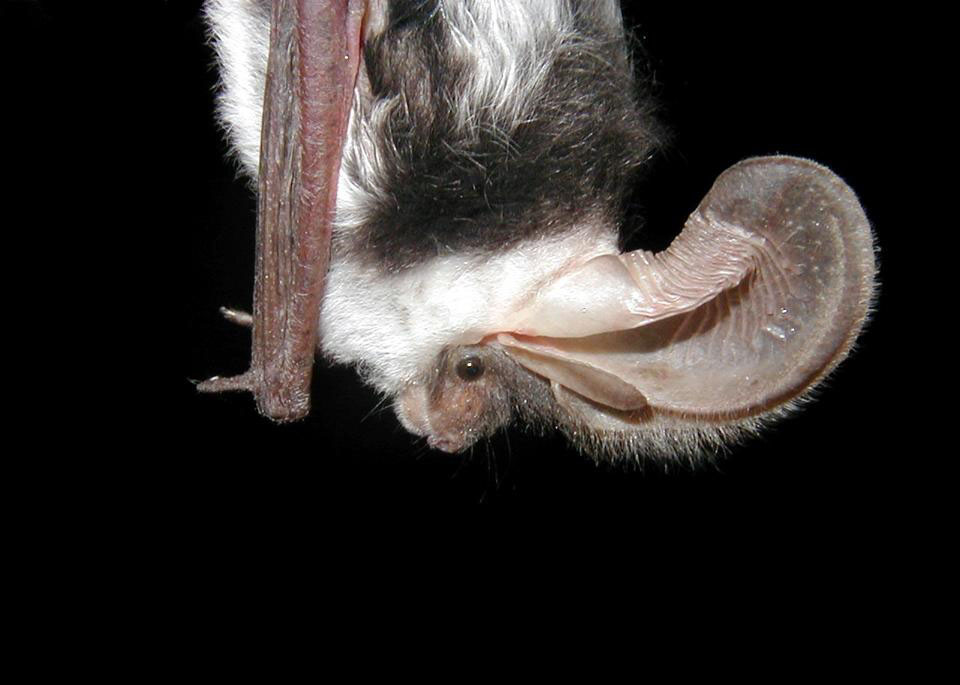October 31, 2024 - Bats are an important species that affect our daily lives in ways we might not even realize. From pollinating our favorite fruits to eating pesky insects to inspiring medical marvels, bats are heroes of the night.
Bat Week — held the last week in October — celebrates the role of bats in nature and all that these amazing creatures do for us. Check out some interesting bat facts below.
1. There are over 1,400 species of bats worldwide.
Bats can be found on nearly every part of the planet, except in extreme deserts and polar regions. The difference in size and shape is equally impressive. Bats range in size from the Kitti’s hog-nosed bat (or bumblebee) bat, which is the world’s smallest mammal, weighing less than a penny — to the flying fox, which has a wingspan of up to 6 feet. The U.S. and Canada are home to 47 species of bats and additional species are found in the U.S. territories in the Pacific and Caribbean.

2. Not all bats hibernate.
Even though bears and bats are the two most well-known hibernators, not all bats spend their winter in caves. Some species, like the spotted bat, survive by migrating to warmer areas in search of food when it gets chilly.

3. Bats have few natural predators — disease is one of the biggest threats.
Owls, hawks and snakes eat bats, but that’s nothing compared to the millions of bats dying from white-nose syndrome. The disease — named for a white fungus on the muzzle and wings of bats — affects hibernating bats and has been detected in 40 states and nine Canadian provinces. This deadly syndrome has decimated certain species more than others. It has killed over 90% of northern long-eared, little brown and tri-colored bat populations in fewer than 10 years. Scientists are developing and testing treatments to stop the disease from devastating bat populations. You can help by avoiding places where bats are hibernating. If you do go underground, decontaminate your clothing, footwear and gear so you won't spread this disease to other areas.

4. Without bats, say goodbye to bananas, avocados and mangoes.
Over 300 species of fruit depend on bats for pollination. Bats help spread seeds for nuts, figs and cacao — the main ingredient in chocolate. Without bats, we also wouldn’t have plants like agave or the iconic saguaro cactus.

5. Night insects have the most to fear from bats.
Each night, bats can eat their body weight in insects, numbering in the thousands! This insect-heavy diet helps foresters and farmers protect their crops from pests.

6. Bats are the only flying mammal.
While the flying squirrel can only glide for short distances, bats are true fliers. A bat’s wing resembles a modified human hand — imagine the skin between your fingers larger, thinner and stretched. This flexible skin membrane that extends between each long finger bone and many movable joints make bats agile fliers.

7. Bats may be small, but they’re fast little creatures.
How fast a bat flies depends on the species, but they can reach speeds over 100 miles per hour according to new research.

8. Conservation efforts can help bat species recover.
Experts estimate that 52% of North American bat species are at risk of severe population declines in the next 15 years. Ten U.S. species are listed as endangered, with one more listed as threatened. These amazing animals face a multitude of threats including habitat loss and disease, but collaborative, international conservation efforts can make a difference. In the southwestern U.S. and Mexico, collaborations have helped one species, the lesser long-nosed bat, become the first bat species to recover and be removed from the Endangered Species list. In 1988, there were thought to be fewer than 1,000 bats at the 14 known roosts range wide. As of 2018—thirty years later—there were an estimated 200,000 bats at 75 roosts!
9. The longest-living bat is 41.
It’s said that the smaller the animal, the shorter its lifespan, but bats break that rule of longevity. Although most bats live less than 20 years in the wild, scientists have documented six species that live more than 30 years. In 2006, a tiny bat from Siberia set the world record at 41 years.

10. Like cats, bats clean themselves.
Far from being dirty, bats spend a lot of time grooming themselves. Some even groom each other. Besides having sleek fur, cleaning also helps control parasites.

11. Dogs aren’t the only ones with pups. Baby bats are called pups, and a group of bats is a "colony."
Like other mammals, mother bats feed their pups breastmilk, not insects. Most bats give birth to a single pup. There is at least one species that commonly has twins and that is the eastern red bat. Momma bats form nursery colonies in spring in caves, dead trees and rock crevices.

12. Bats are inspiring medical marvels.
About 80 medicines come from plants that rely on bats for their survival. While bats are not blind, studying how bats use echolocation has helped scientists develop navigational aids for the blind. Research on bats has also led to advances in vaccines.

13. Innies or Outies? Humans aren’t the only ones with belly buttons.
With a few exceptions, nearly all mammals have navels because of mom’s umbilical cord, and bats are no different. Now the real question is: Innies or outies?
Can you spot this Mariana Fruit bat’s belly button? Photo by Julia Boland, USFWS.
Bats need your help. You can help protect these amazing creatures by planting a bat garden or installing a bat house.
Stay out of closed caves, especially ones with bats. If you’re visiting an open cave, make sure to prevent the spread of white-nose syndrome by following these guidelines.
Source: DOI








